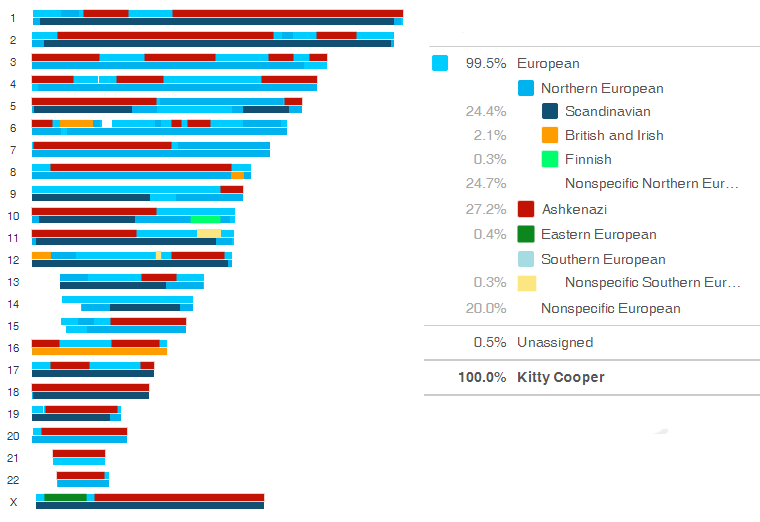So far I am finding that the common ancestors with Dad’s DNA matches at both 23andme and FamilyTreeDNA are much further back than predicted. We have found the MRCA for only those distant cousins with good paper trails and perhaps even a tree at GENI like we have.
Most of these matches are only one or two segments and the longer the segment the more likely it is to be a real match with a discoverable common ancestor. I actually found a new 5th cousin of mine through DNA, Dad’s 4th cousin once removed. She has a one segment match of 17.14 CMs and 2849 SNPs in common with Dad and our common ancestors are in the 1700s at farm Fatland in Etne, Hordaland, Norway (online resources for Etne research listed at familysearch.org)
23andme shows you all your 7cm and larger matches but many genetic genealogists think anything less than 10cm is suspect. My view is that if Dad’s match is also a match with either me or my brother (n.b. frequently the match is for fewer SNPs and CMs in the next generation) then it is real, even at 6cm. As you can see in the chart, we have found many common ancestors with smaller than 10cm matches. GEDmatch lets you look at even smaller segment matches with specific people as does Family Tree DNA.
Here is a summary of the most recent common ancestors in Norway that I found for Dad with some of his DNA matches:
